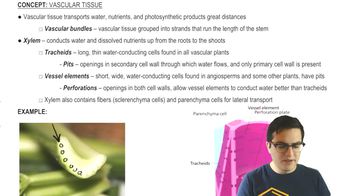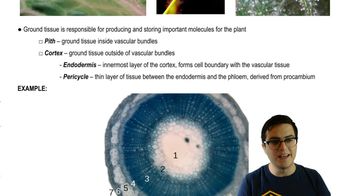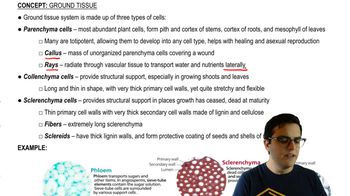33. Plant Anatomy
Tissues
33. Plant Anatomy
Tissues
Additional 10 creators.
Learn with other creators
Showing 13 of 13 videos
Practice this topic
- Multiple ChoiceArtichoke hearts are tender and have a strong taste. The leaves have a strong taste, too, but most of an artichoke leaf is fibrous and too difficult to chew. The leaves must contain lots of __________.
- Multiple ChoiceThe plant tissue system most analogous to our circulatory system is the __________.
- Multiple ChoiceGround tissue is composed of undifferentiated cells with thin walls that are usually involved with storage. The inner portion of the ground tissue of a nonwoody stem is called __________, and the outer portion is called __________.
- Multiple ChoiceWhich of the following cells are dead at functional maturity?
- Open QuestionWhat is a sieve-tube element?a. the sugar-conducting cell found in phloemb. the widened, perforation-containing, water-conducting cell found only in angiospermsc. the nutrient- and water-absorbing cell found in root hairsd. the nucleated and organelle-rich support cell found in phloem
- Open QuestionThe innermost layer of the root cortex is thea. core.b. pericycle.c. endodermis.d. pith.
- Open QuestionEvaluate the following statements regarding tracheids and vessel elements. Select True or False for each statement.T/F Both tracheids and vessel elements are specialized for water conduction.T/F Both tracheids and vessel elements have pits.T/F Vessel elements have perforation plates but tracheids do not.T/F Tracheids and vessel elements have to be alive in order to transport water.
- Open QuestionSplicing begins:a. as transcription occurs.b. after transcription is complete.c. as translation occurs.d. after translation is complete.
















